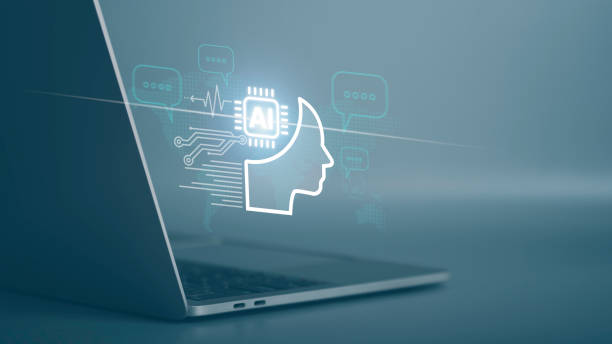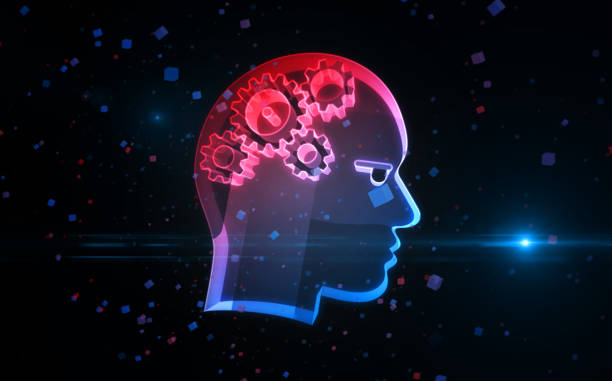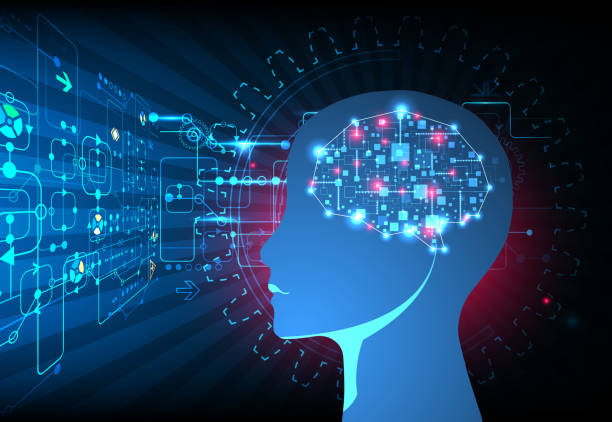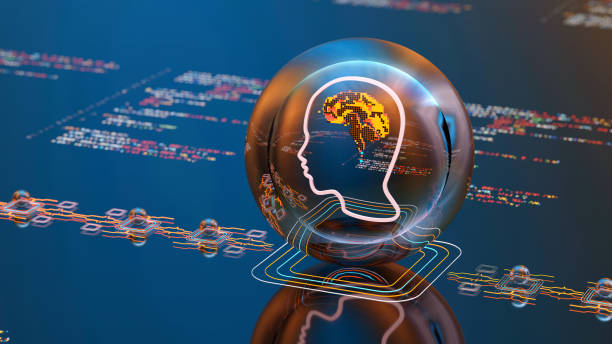What is an AI Robot and How Does it Work?

In today’s world, #Artificial_Intelligence is rapidly advancing, and Artificial Intelligence Robots play a very important role.
An AI robot is essentially a computer program or a physical machine capable of performing tasks that typically require human intelligence.
These tasks can include learning, reasoning, problem-solving, understanding natural language, and recognizing patterns.
The basic operation of an AI robot is based on algorithms and machine learning models.
These algorithms allow the robot to learn from data and improve its performance over time.
For example, an AI robot can learn to recognize human faces by analyzing thousands of images.
AI robots use sensors and input devices to collect information from their surroundings.
This information is then processed by AI algorithms so that the robot can make decisions and perform appropriate actions.
For instance, a self-driving car uses various sensors like cameras and lidar to understand its environment and then, using AI algorithms, determines its path and avoids obstacles.
Are you dissatisfied with the low sales of your online store?
Rasaweb is your solution for having a professional and high-selling online store.
✅ Significant increase in sales and revenue
✅ Easy and enjoyable shopping experience for customers
⚡ Get a free consultation from Rasaweb now!
Types of AI Robots: A Comprehensive Review
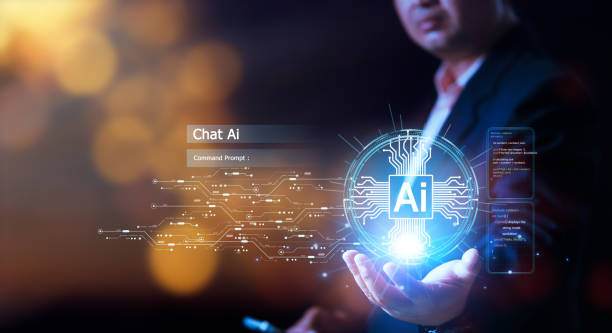
AI robots can be categorized based on various criteria.
One of the most common methods is categorization based on the type of tasks the robot is capable of performing.
Accordingly, AI robots can be divided into the following categories :
Chatbots These robots are designed to interact with users in natural language.
They can answer user questions, provide necessary information, and help them with various tasks.
Chatbots are commonly used on websites, messaging applications, and other online platforms.
Natural Language Processing Robots These robots are designed to analyze and understand human language.
They can process text, detect emotions, perform machine translation, and summarize text.
Natural language processing robots are used in various fields such as customer service, marketing, and scientific research.
Computer Vision Robots These robots are designed to analyze and understand images and videos.
They can detect objects, identify faces, understand scenes, and perform video analysis.
Computer vision robots are used in various fields such as self-driving cars, video surveillance, and medical diagnosis.
Machine Learning Robots These robots are designed to learn from data and improve their performance over time.
They can detect patterns in data, make predictions, and make decisions.
Machine learning robots are used in various fields such as marketing, finance, and healthcare.
AI robots are constantly evolving and are expected to play a more significant role in our lives in the future.
Applications of AI Robots in Various Industries

AI robots are currently used in various industries and have a significant impact on how tasks are performed.
Some of the most important applications of AI robots in various industries include :
Manufacturing Industry In the manufacturing industry, AI robots are used to perform repetitive and dangerous tasks.
They can automate production lines, increase product quality, and reduce production costs.
Healthcare Industry In the healthcare industry, AI robots are used to diagnose diseases, provide treatment, and care for patients.
They can analyze medical images, prescribe appropriate medications, and assist surgeons in performing operations.
Financial Industry In the financial industry, AI robots are used to analyze financial data, detect fraud, and provide financial advice.
They can assess financial risks, suggest suitable investments, and help customers manage their finances.
Retail Industry In the retail industry, AI robots are used to provide customer service, manage inventory, and marketing.
They can answer customer questions, suggest products to them, and help them make purchases.
Transportation Industry In the transportation industry, AI robots are used to automate vehicles, manage traffic, and provide intelligent transportation services.
They can autonomously drive vehicles, optimize traffic, and help passengers find the best routes.
| Industry | Application | Benefits |
|---|---|---|
| Manufacturing | Automating production lines | Increased productivity, reduced costs |
| Healthcare | Diagnosing diseases | More accurate diagnosis, higher speed |
| Finance | Analyzing financial data | Better risk management, more accurate advice |
With technological advancements, the applications of AI robots are expected to expand across various industries and have a greater impact on our lives.
Advantages and Disadvantages of Using AI Robots

The use of AI robots has various advantages and disadvantages that need to be considered.
Advantages:
Increased Productivity AI robots can perform tasks faster and more accurately than humans, which leads to increased productivity.
Reduced Costs AI robots can reduce labor costs and also reduce costs related to errors and accidents.
Improved Quality AI robots can improve the quality of products and services, as they are less prone to fatigue and error than humans.
Performing Dangerous Tasks AI robots can perform tasks that are dangerous for humans, such as working in contaminated environments or with hazardous chemicals.
Disadvantages:
High Implementation Cost Implementing AI robots can be costly, as it requires investment in hardware, software, and training.
Job Loss The use of AI robots can lead to job loss, as they can replace humans in many occupations.
Ethical Issues The use of AI robots can raise various ethical issues, such as those related to privacy, discrimination, and accountability.
Dependence on Technology Excessive reliance on AI robots can lead to dependence on technology and deprive humans of their skills.
AI robots, despite their disadvantages, offer significant advantages and can help improve our lives.
However, ethical and social issues related to their use must be considered to prevent their negative impacts.
Are you tired of your online store having visitors but no sales? Rasaweb solves your main problem by designing professional online stores!
✅ Significant sales increase with targeted design
✅ Seamless user experience for your customers
⚡ Get a free consultation now!
What Will Be the Future of AI Robots?
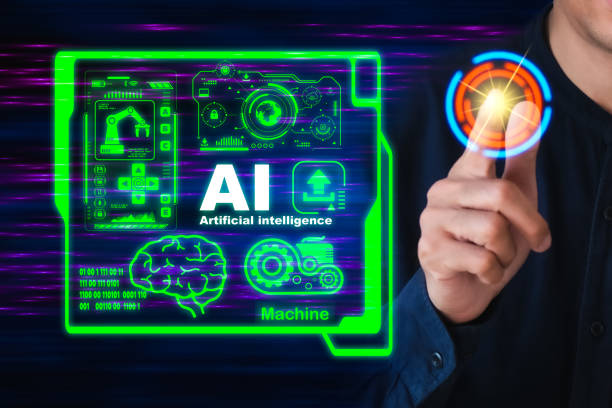
The future of AI robots looks very bright and promising.
With technological advancements, AI robots are expected to become more advanced, intelligent, and capable.
They will be able to perform more complex tasks and play a greater role in more areas of our lives.
Some important trends in the development of AI robots include:
Deep Learning Deep learning is a powerful machine learning method that allows robots to learn from large data and recognize complex patterns.
This technology is currently used in many areas such as face recognition, speech recognition, and machine translation.
Natural Language Processing Natural language processing allows robots to understand human language and interact with humans in natural language.
This technology is currently used in chatbots, voice assistants, and other applications.
Computer Vision Computer vision allows robots to see and understand images and videos.
This technology is currently used in self-driving cars, video surveillance, and other applications.
Robotics Robotics allows robots to move in the physical world and interact with objects.
This technology is currently used in manufacturing, healthcare, and other fields.
AI robots will soon be able to revolutionize various fields such as education, healthcare, transportation, and manufacturing.
They can help us with daily tasks, solve complex problems, and improve our lives.
Challenges and Opportunities Facing the Development of AI Robots

The development of AI robots faces numerous challenges and opportunities.
Challenges:
Ethical Issues The use of AI robots can raise various ethical issues, such as those related to privacy, discrimination, and accountability.
Laws and regulations should be established to govern the use of AI robots to protect human rights and freedoms.
Job Loss The use of AI robots can lead to job loss, as they can replace humans in many occupations.
Programs for training and empowering workers should be created so that they can acquire new skills and find employment in new jobs.
Security AI robots can be vulnerable to cyberattacks.
Appropriate security measures must be taken to protect AI robots from cyberattacks.
Opportunities:
Creation of New Jobs The development of AI robots can lead to the creation of new jobs in various fields such as software development, hardware engineering, and data science.
Improving Quality of Life AI robots can help improve our quality of life, for example, by providing better healthcare services, safer transportation, and higher quality education.
Solving Complex Problems AI robots can help solve complex problems in various fields such as climate change, infectious diseases, and poverty.
AI robots, by overcoming challenges and seizing opportunities, can play a significant role in economic and social development and help improve our lives.
How to Build an AI Robot? A Step-by-Step Guide

Building an AI robot can be a challenging yet very exciting project.
In this section, we provide a step-by-step guide for building a simple AI robot:
Step 1: Define the Goal First, you need to define your goal for building the AI robot.
What do you want the robot to do? Do you want to build a chatbot, a face recognition robot, or a self-driving robot?
Step 2: Data Collection To train the AI robot, you need data.
The type of data required depends on your goal.
For example, if you want to build a face recognition robot, you need a set of face images.
Step 3: Choose a Machine Learning Algorithm The machine learning algorithm is the core of your AI robot.
Different algorithms exist for different tasks.
For example, if you want to build a face recognition robot, you can use a convolutional neural network algorithm.
Step 4: Train the Model Using the collected data and the selected machine learning algorithm, you need to train your model.
This process can be time-consuming and require high processing power.
Step 5: Evaluate the Model After training the model, you need to evaluate it to ensure it works correctly.
You can use test data to evaluate the model.
Step 6: Deploy the Model After evaluating and ensuring the correct performance of the model, you can deploy it.
This means placing the model in a real environment so that it can perform its tasks.
| Step | Description | Required Tools |
|---|---|---|
| 1 | Define the Goal | – |
| 2 | Data Collection | Dataset |
| 3 | Select Algorithm | TensorFlow, PyTorch |
Building an AI robot requires specific knowledge and skills.
If you are a beginner, you can start with simpler projects and gradually improve your skills.
Tools and Programming Languages Used in AI Robot Development

Developing AI robots requires the use of specific tools and programming languages.
Some of the most important tools and programming languages used in this field include :
Programming Languages:
Python Python is one of the most popular programming languages for developing AI robots.
This language has powerful libraries such as TensorFlow, PyTorch, and scikit-learn, which are very suitable for machine learning and natural language processing.
Python is also suitable for beginners due to its simplicity and readability.
Java Java is a powerful and widely used programming language used for developing enterprise applications as well as AI robots.
Java has libraries like Deeplearning4j which are suitable for deep learning.
C++ C++ is a fast and efficient programming language used for developing high-performance AI robots.
C++ allows developers to have more control over hardware and create more optimized programs.
Tools:
TensorFlow TensorFlow is a powerful machine learning library developed by Google.
TensorFlow supports distributed computing and is very suitable for training complex deep learning models.
PyTorch PyTorch is an open-source machine learning library developed by Facebook.
PyTorch is very suitable for research and rapid development of machine learning models due to its flexibility and ease of use.
scikit-learn scikit-learn is an open-source machine learning library that is very suitable for traditional machine learning tasks such as classification, regression, and clustering.
scikit-learn is also suitable for beginners due to its simplicity and ease of use.
AI robots, by using these tools and programming languages, you can develop powerful AI robots.
Is your online store ready to attract maximum customers and increase sales? Rasaweb transforms your online business with its modern and efficient e-commerce website designs.
✅ Increased speed and improved SEO
✅ Excellent user experience on mobile and desktop⚡ Get a free e-commerce website design consultation from Rasaweb now!
The Impact of AI Robots on Our Daily Lives
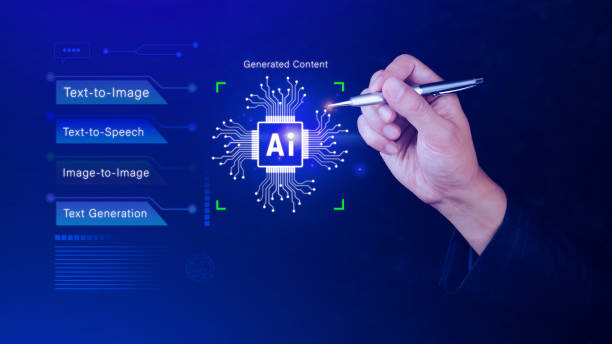
AI robots currently have a significant impact on our daily lives, and this impact is expected to increase in the future.
Some of the most important impacts of AI robots on our daily lives include:
Voice Assistants Voice assistants like Siri, Alexa, and Google Assistant use AI robots to answer our questions, perform tasks, and control smart devices.
Recommenders Recommenders use AI robots to suggest products, movies, music, and other content to us.
These recommenders can help us find things we are interested in.
Chatbots Chatbots use AI robots to provide customer service, answer questions, and solve problems.
Chatbots can help us save time and energy.
Self-driving Cars Self-driving cars use AI robots to drive without human intervention.
These cars can help reduce accidents, reduce traffic, and improve transportation.
Face Recognition Face recognition uses AI robots to identify people in images and videos.
This technology can be applied in various fields such as security, surveillance, and marketing.
AI robots are increasingly present in our daily lives, helping us with tasks, solving problems, and improving our quality of life.
With technological advancements, their impact on our lives is expected to grow.
Ethical Considerations in Designing and Using AI Robots
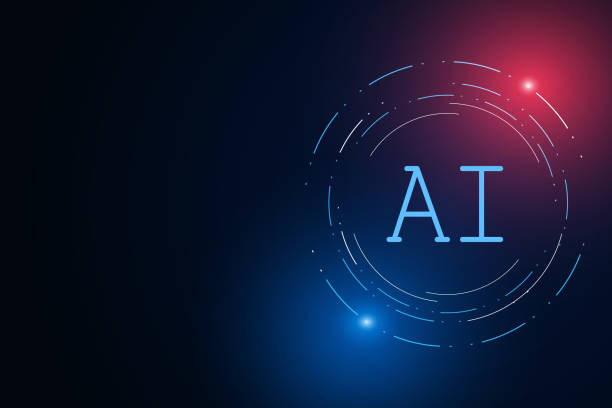
The design and use of AI robots come with important ethical considerations that must be addressed.
Some of the most important ethical considerations in this regard include:
Privacy AI robots can collect a lot of information about us, such as personal information, financial information, and health-related information.
It must be ensured that this information is properly protected and not used for unauthorized purposes.
Discrimination AI robots can unintentionally be discriminatory.
For example, a face recognition robot might have lower accuracy in recognizing faces of individuals with darker skin tones.
It must be ensured that AI robots are designed and used fairly and without discrimination.
Accountability If an AI robot makes a mistake, who will be responsible? Is the developer, the user, or the robot itself responsible? Laws should be established to determine accountability in case of errors made by AI robots.
Transparency The operation of AI robots should be transparent so that one can understand how they make decisions.
This helps us trust robots and use them responsibly.
AI robots should be designed and used in a way that respects our ethical values and helps improve our lives.
Careful consideration must be given to the ethical implications of this technology to prevent its negative impacts.
Frequently Asked Questions
| Question | Answer |
|---|---|
| What is an AI robot? | An Artificial Intelligence Robot (AI Robot) is a machine capable of understanding its environment, reasoning, learning, and making decisions to perform tasks independently. |
| What is the difference between conventional robots and AI robots? | Conventional robots perform repetitive tasks based on prior programming, while AI robots can learn from experience, interact dynamically with their environment, and even behave in a way that resembles human intelligence. |
| What are the main applications of AI robots? | They are used in industries (manufacturing, assembly), medicine (surgery, diagnosis), services (customer support, domestic), exploration (space, underwater), and many other fields. |
| What technologies are used in building AI robots? | Machine Learning, Computer Vision, Natural Language Processing, Deep Learning, and Robotics are among the key technologies. |
| Can AI robots have emotions? | Currently, robots do not have emotions in the human sense. They can identify emotions and react to them, but they do not experience emotions themselves. |
| What are the main challenges in developing AI robots? | Safety, reliability, ethics, autonomy, adaptability to complex environments, and natural human interaction are important challenges. |
| How are AI robots trained? | They are typically trained using large amounts of data, machine learning, and deep learning algorithms to identify patterns and make decisions. |
| Examples of AI robots in daily life? | Smart robotic vacuum cleaners, customer support chatbots, self-driving cars, and surgical robots in hospitals. |
| Are AI robots a threat to human jobs? | Some repetitive jobs may be automated, but at the same time, robots can increase productivity and create new jobs in the development, maintenance, and supervision of these systems. |
| How is the future of AI robots predicted? | They are expected to become smarter, more autonomous, and capable of performing more complex tasks, interacting more closely with humans in various environments. |
And other advertising agency Rasa Web services in the field of advertising
- Smart Conversion Rate Optimization: Revolutionize user interaction by optimizing key pages.
- Smart SEO: A fast and efficient solution for campaign management with a focus on precise audience targeting.
- Smart SEO: Revolutionize SEO ranking improvement with dedicated programming.
- Smart UI/UX: Designed for businesses looking to increase website visits through precise audience targeting.
- Smart Marketplace: An effective tool for user interaction through attractive UI design.
And over hundreds of other services in the field of internet advertising, advertising consultation, and organizational solutions
Internet Advertising | Advertising Strategy | Advertorial
Sources
Robotics and AI on ZoomitAI Robot on DigiatoArtificial Intelligence on WikipediaSmart Robots and the Future of the World on IRNA
? For a big leap in your business and reaching the peak of success, Rasaweb Digital Marketing Agency is by your side with its specialized services. Get a powerful online presence right now with fast and professional website design.
📍 Tehran, Mirdamad Street, next to Central Bank, Southern Kazeroon Alley, Ramin Alley, No. 6

